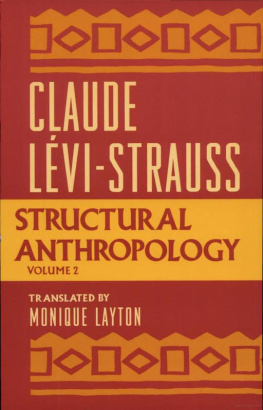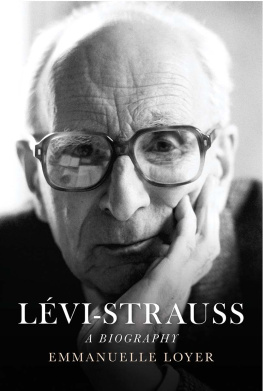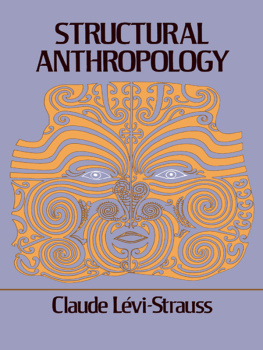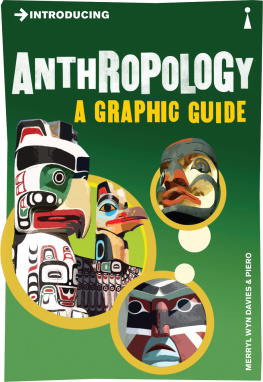Claude Lévi-Strauss - Structural Anthropology, Volume 2
Here you can read online Claude Lévi-Strauss - Structural Anthropology, Volume 2 full text of the book (entire story) in english for free. Download pdf and epub, get meaning, cover and reviews about this ebook. year: 1976, publisher: Basic Books, genre: Religion. Description of the work, (preface) as well as reviews are available. Best literature library LitArk.com created for fans of good reading and offers a wide selection of genres:
Romance novel
Science fiction
Adventure
Detective
Science
History
Home and family
Prose
Art
Politics
Computer
Non-fiction
Religion
Business
Children
Humor
Choose a favorite category and find really read worthwhile books. Enjoy immersion in the world of imagination, feel the emotions of the characters or learn something new for yourself, make an fascinating discovery.
- Book:Structural Anthropology, Volume 2
- Author:
- Publisher:Basic Books
- Genre:
- Year:1976
- Rating:4 / 5
- Favourites:Add to favourites
- Your mark:
- 80
- 1
- 2
- 3
- 4
- 5
Structural Anthropology, Volume 2: summary, description and annotation
We offer to read an annotation, description, summary or preface (depends on what the author of the book "Structural Anthropology, Volume 2" wrote himself). If you haven't found the necessary information about the book — write in the comments, we will try to find it.
Structural Anthropology, Volume 2 — read online for free the complete book (whole text) full work
Below is the text of the book, divided by pages. System saving the place of the last page read, allows you to conveniently read the book "Structural Anthropology, Volume 2" online for free, without having to search again every time where you left off. Put a bookmark, and you can go to the page where you finished reading at any time.
Font size:
Interval:
Bookmark:
CLAUDE LVI-STRAUSS
Structural Anthropology VOLUME II
Translated from the French by Monique Layton
BASIC BOOKS, Inc., Publishers, New York
Library of Congress Cataloging in Publication Data (Revised)
Lvi-Strauss, Claude.
Structural anthropology.
Vol. 2 translated by M. Layton Bibliography v. 1, p. 385-398; v. 2, p. 1. Structural anthropology.
| GN362.L4813 | 301.2 | 63-17344 |
ISBN 0-465-08230-0 (v. 2)
COPYRIGHT 1976 BY CLAUDE LVI-STRAUSS PRINTED IN THE UNITED STATES OF AMERICA
76 77 78 79 80 10 9 8 7 6 5 4 3 2 1
To the members of the Laboratoire d'anthropologie sociale
Vos quoque pectoribus nostris haeretis, amici, dicere quos cupio nomine quemque suo.
Ovid, Tristia, III, iv.
vii
APPEARING FIFTEEN YEARS after Structural Anthropology, Volume I, this book remains faithful to the same formula: it brings together texts which were written both before and after the publication of the first book. Some were written in French, others directly in English; almost all are impossible to find today. They were so selected and ordered as to enable a reader unfamiliar with the problems of modern ethnology to get a bird's-eye view; to be introduced by means of a few representative examples gathered in a single volume to the way structural anthropology tackles these problems and attempts to solve them.
Part One, devoted to the past and future of the discipline, defines the field of anthropology and puts into proper perspective the questions it poses.
In Part Two, examples illustrate the way to overcome some theoretical and practical difficulties related to social organization and attitudes linked to kinship systems.
Part Three is the most developed. In it I treat that domain which I have been most concerned with for the past twenty years: mythology and ritual. I attempt to distinguish between structuralism
viii
and formalism from a theoretical point of view. Some concrete examples are used to show how variants of one myth, or several myths which appear different from one another, can be reduced to so many stages of the same group of transformations, as can their corresponding rituals among the same or among different peoples. Finally, I illustrate the manner in which a myth can degenerate into legendary tradition, romantic narrative, or political ideology.
Part Four briefly reviews the various problems which our contemporary societies face in many areas: literature, fine arts, urban life. More attention is given to the organization of research and teaching in the human and social sciences, and to certain obstacles, too often misunderstood or underestimated, against what we call progress.
This last part ends with the oldest text in this collection; a text published in 1952 and reprinted several times, but presented here in a revised version. The very wide perspective enables one to use this text as a conclusion, since it examines the relations between race and history, on the one hand, and the question of nature and the meaning of progress, on the other.
The most fashionable objection to structural anthropology is that its hypotheses cannot be "falsified." Yet, this criterion can only be applied to fully established sciences. Anthropology has not yet attained this stage. No physical or natural science could have come to maturity in the centuries it took for them to develop if they had allowed themselves to be stopped by this type of criticism.
We may even wonder if this criterion of "falsifiability" can truly be applied to human sciences. Their epistemological status is not at all like those which the physical and natural sciences can claim for themselves. These are characterized by a harmony which at all times has reigned among those who practice them at the level considered relevant to the contemporary state of the research. But such is not the case for those we call human sciences. With these, there is little or no discussion on the validity of such-and-such hypothesis. The discussion bears instead on the choice of a certain level of reference implied by this hypothesis, and not of another level which an opponent might favor.
It is exceptional for structural anthropologists to be told:
ix
"Your interpretation of this phenomenon or group of phenomena is not the one which best accounts for the facts." Rather, they are told: "The way you break down the phenomena is not the way which interests us; we choose to break them down another way." The subject of the human sciences is man, yet the man who studies himself as he practices the human sciences will always allow his preferences and prejudices to interfere in the way he defines himself to himself. What is interesting in man is not subject to scientific decision but results and always will result from a choice which is ultimately of a philosophical order.
So we must recognize that the hypotheses of the human sciences cannot, now or ever, be falsified. In this domain, a hypothesis is never true. Consequently, it cannot be false either. Let us rather say that, in the human sciences (and thus in anthropology), a hypothesis only possesses a relative value, granted if it succeeds in accounting for more facts than those hypotheses it replaces; that is, until such times as another one makes a new step in the same direction. Thus it is proper to locate structural anthropology in relation to its predecessor and to those hypotheses which will one day replace it.
The value of the epistemological model offered by structuralism to the human sciences cannot be compared to the models available so far. Structuralism uncovers a unity and a coherence within things which could not be revealed by a simple description of the facts somehow scattered and disorganized before the eyes of knowledge. It also does this more economically, with a very small number of principles, axioms, and rules which, in a variety of domains, have proved their fecundity. But structuralism does not presume to contain the truth. It is content to say that things are a little clearer today than they were yesterday. While it hopes that its efforts, surpassed by others, have contributed to the progress made by human sciences, it knows that the nature of its study is such that this progress has no conceivable end. It also knows that we will only be able to verify or falsify the hypotheses we use on that remote day (if it ever comes) when the natural sciences are able to reach those organic foundations for progress which now we can only perceive as undefined and distorted reflections.
Claude Lvi-Strauss
I WISH TO THANK Heather Wagg, who collaborated with me through most of the translation, and Barry Pavitt, who assisted in its last stages. My thanks are also due to Francis Levy and J. Powell, who kindly gave me their help when I needed it.
May I also express my gratitude to Professor Lvi-Strauss for his constant willingness to clarify points obscure to me, and for his patient assistance.
| Author's Preface | vii |
| Translator's Preface | xi |
| List of Figures | xv |
| PART ONE PERSPECTIVE VIEWS | |
| I The Scope of Anthropology | 3 |
| II Jean-Jacques Rousseau, Founder of the Sciences of Man | 33 |
| III What Ethnology Owes to Durkheim | 44 |
| IV The Work of the Bureau of American Ethnology and Its Lessons | 49 |
| V Comparative Religions of Nonliterate Peoples | 60 |
| PART Two SOCIAL ORGANIZATION | |
| VI The Meaning and Use of the Notion of Model |
Font size:
Interval:
Bookmark:
Similar books «Structural Anthropology, Volume 2»
Look at similar books to Structural Anthropology, Volume 2. We have selected literature similar in name and meaning in the hope of providing readers with more options to find new, interesting, not yet read works.
Discussion, reviews of the book Structural Anthropology, Volume 2 and just readers' own opinions. Leave your comments, write what you think about the work, its meaning or the main characters. Specify what exactly you liked and what you didn't like, and why you think so.










